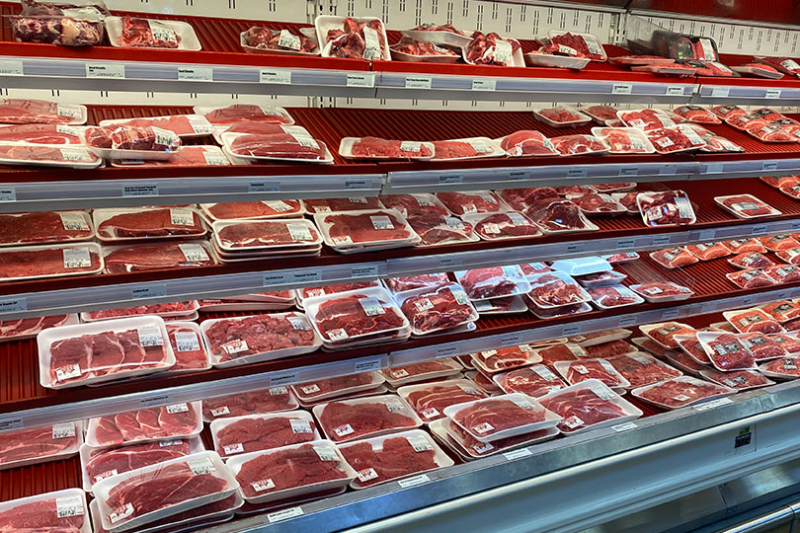As summer winds down, retail beef prices are falling slightly from record highs in July.
Reports from the U.S. Department of Agriculture’s (USDA) Economic Research Service (ERS) showed the all fresh value of beef prices reached $8.15 per pound.
“This is important because it marks the first time in the history of data collection that the all-fresh average moved above $8,” American Farm Bureau Federation (AFBF) Economist Bernt Nelson said. “We have a lot of cuts that moved up in price, especially through that July timeframe.”
Retail prices reached the record highs because of the tighter supply of cattle.
The U.S. currently has the smallest cattle inventory in over 70 years, which has led to a reduction in the U.S. beef supply.
Pasture conditions began to deteriorate across the U.S. in 2020. The ongoing drought sent prices for feed grains to record levels and inflation began driving up costs for consumers, as well as farmers and ranchers.
That combination of drought and high input costs sent more cattle to harvest rather than rebuilding cattle herds.
“It is mostly the low inventory, and this goes back several years. You know, we’ve been talking about this since 2020, and as these prices have improved, there’s business incentives for farmers to keep selling cattle,” Nelson said. “There’s also a lot of obstacles to growth here, and as long as those incentives are greater than the incentive to keep, we’re going to keep contracting in this phase.”
Although consumers are paying more at the meat counter, Nelson noted that increased doesn’t necessarily make it back to the farmers and ranchers.
“A farmer will see about 34 cents of every retail dollar come back to the farmer with regards to beef production, but we’re still not seeing really strong profitability here,” he said. “That retail dollar does not mean that’s what the farmer makes. The packer is really seeing the largest market share in this scenario, and the farmer has the least control out of all ends.”
Learn more about cattle on feed, cold storage and obstacles to expansion in AFBF’s latest Market Intel report.


Leave A Comment